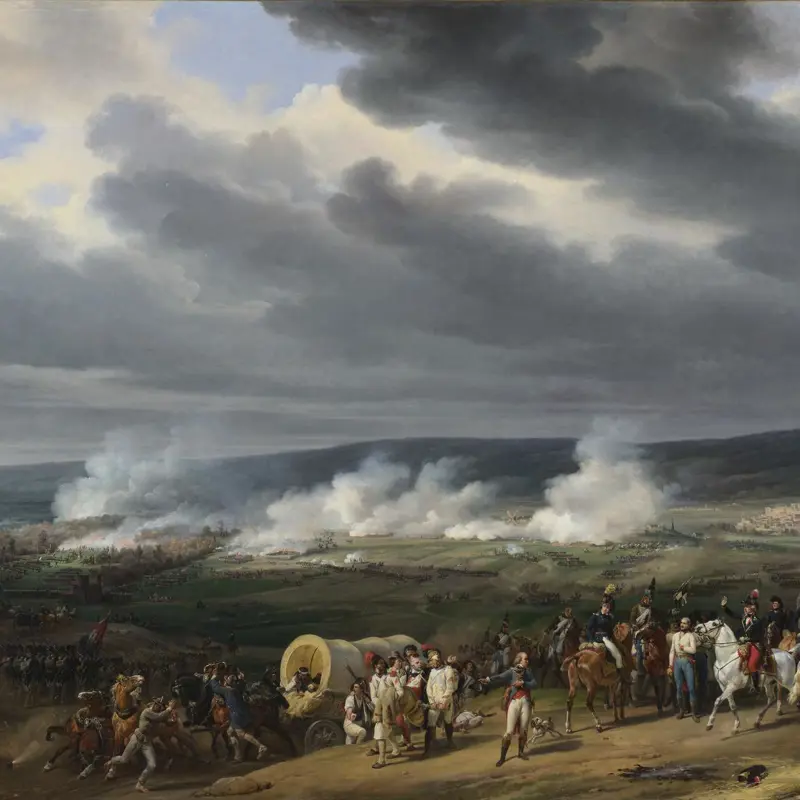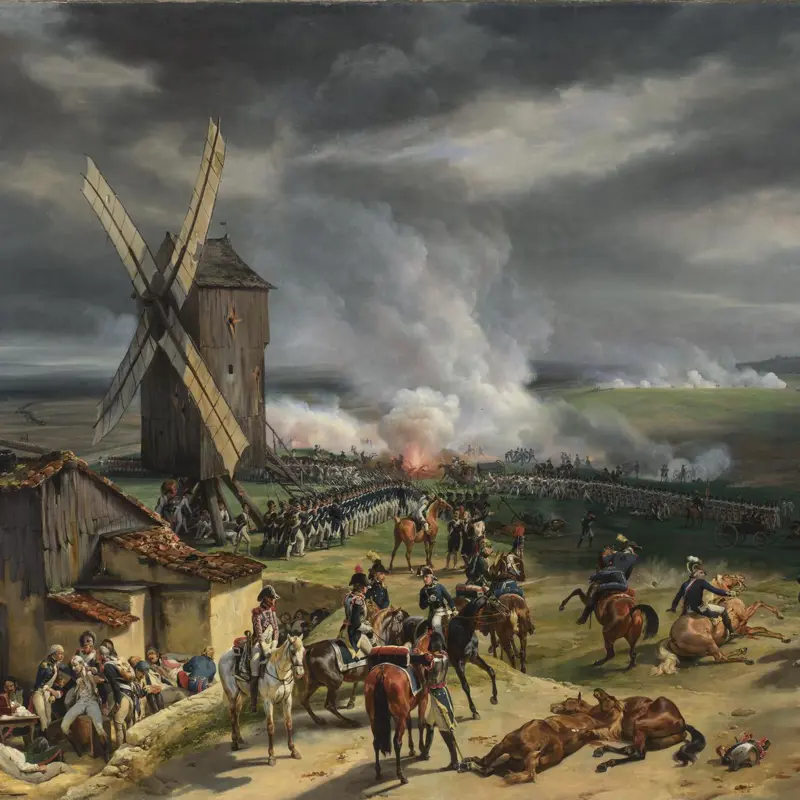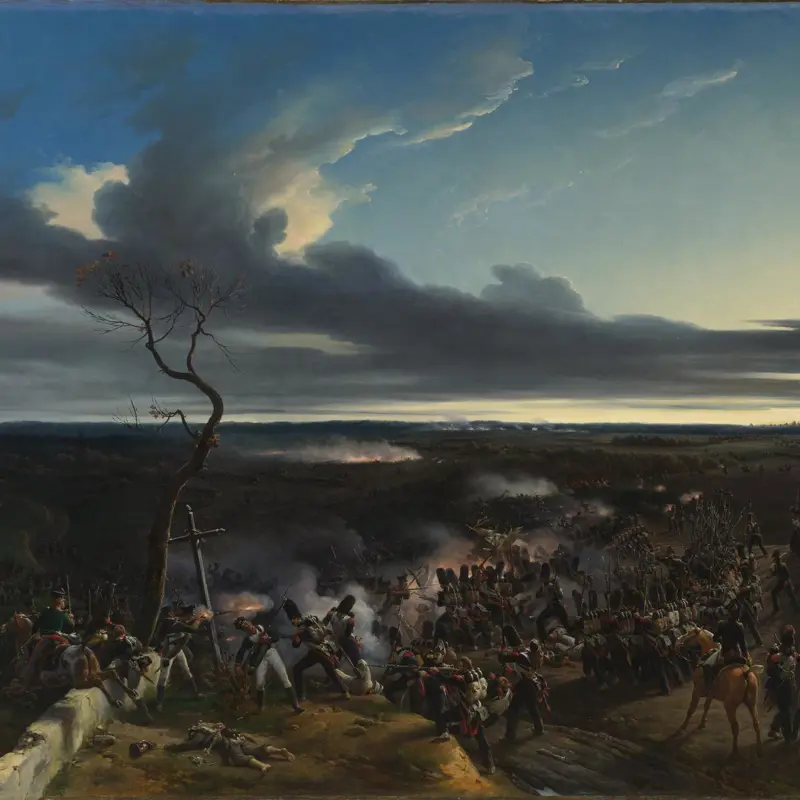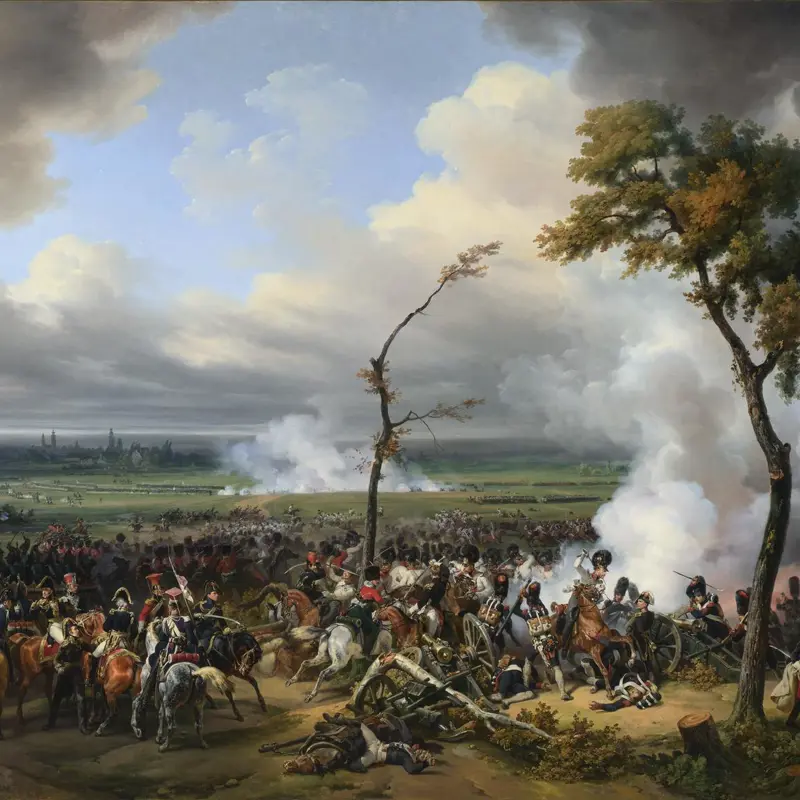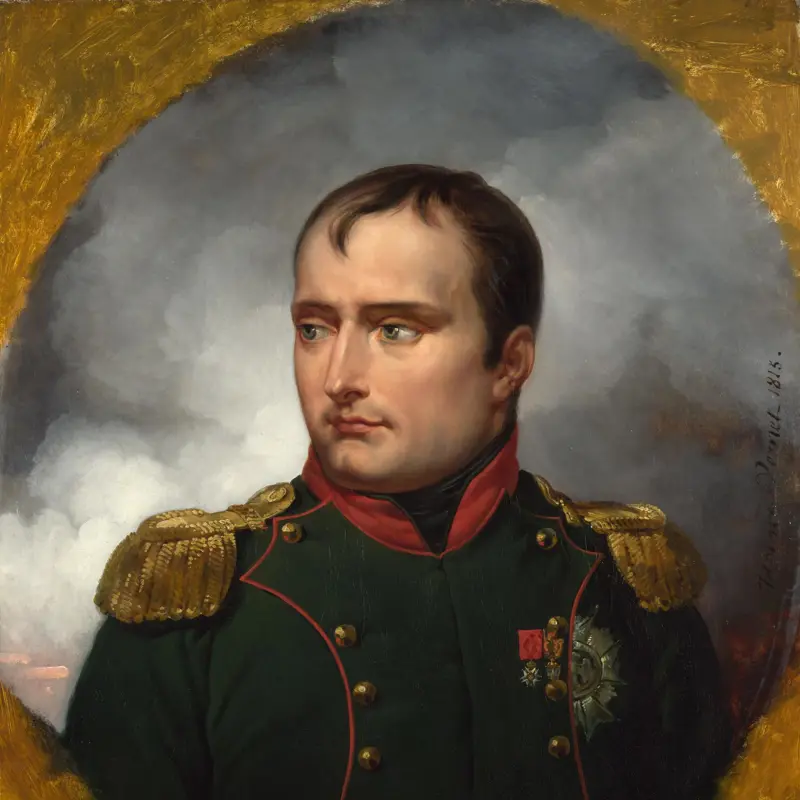Emile-Jean-Horace Vernet, 'The Battle of Hanau', 1824
About the work
Overview
Following his defeat at the Battle of Leipzig on 19 October 1813, Napoleon was forced to withdraw west of the Rhine and retreat to France. As the French withdrew, they met a force of Austro-Bavarian troops, under the command of Karl Philipp von Wrede, on 30 October at the town of Hanau, near Frankfurt. Despite their previous heavy losses, the French, under the personal command of Napoleon, pushed back Wrede’s troops and captured Hanau, which gave them eventual access to France. The Battle of Hanau was one of Napoleon’s final victories before France was invaded.
This painting is the third in a group of four battle scenes commissioned from Vernet by the duc d'Orléans. Although the duke did not fight at Hanau, he benefited politically from references to Napoleon and the memory of imperial victory. As in the other pictures in the group, a panoramic view is combined with detailed scenes of dramatic action.
Key facts
Details
- Full title
- The Battle of Hanau
- Artist
- Emile-Jean-Horace Vernet
- Artist dates
- 1789 - 1863
- Part of the series
- Four Battle Scenes
- Date made
- 1824
- Medium and support
- Oil on canvas
- Dimensions
- 174 × 289.8 cm
- Inscription summary
- Signed; Dated
- Acquisition credit
- Bequeathed by Sir John Murray Scott, 1914
- Inventory number
- NG2966
- Location
- Not on display
- Collection
- Main Collection
- Previous owners
Provenance
Additional information
Text extracted from the ‘Provenance’ section of the catalogue entry in Martin Davies, with additions and some revisions by Cecil Gould, ‘National Gallery Catalogues: French School: Early 19th Century, Impressionists, Post-Impressionists, etc.’, London 1970; for further information, see the full catalogue entry.
Exhibition history
-
2018Louis-Phillipe and VersaillesChâteau de Versailles6 October 2018 - 3 February 2019
Bibliography
-
1957Martin Davies, National Gallery Catalogues: French School, 2nd edn (revised), London 1957
-
1970Davies, Martin, and Cecil Gould, National Gallery Catalogues: French School: Early 19th Century, Impressionists, Post-Impressionists etc., London 1970
-
2001
C. Baker and T. Henry, The National Gallery: Complete Illustrated Catalogue, London 2001
About this record
If you know more about this work or have spotted an error, please contact us. Please note that exhibition histories are listed from 2009 onwards. Bibliographies may not be complete; more comprehensive information is available in the National Gallery Library.
Images
About the series: Four Battle Scenes
Overview
Following the military defeat and abdication of Napoleon in 1815, the Bourbon monarchy was restored in France. These four large battle paintings were commissioned by the duc d'Orléans (1773–1850) who had returned to France after some 21 years in exile. In 1830 he became Louis-Philippe, King of the French.
Although painted during the period of the Bourbon Restoration, all four pictures – for which Vernet was paid 38,000 francs – show French victories during the previous era of the Revolutionary and Napoleonic wars. The duke had fought with the armies of the newly established French Republic at Jemappes and at Valmy, and was keen to demonstrate his Republican sympathies. The pictures were hung in prominent positions in the Palais-Royal in Paris and functioned as propaganda celebrating French military glory and the Duke’s own career and leadership. Completed over five years, the paintings are The Battle of Jemappes (1821), The Battle of Montmirail (1822), The Battle of Hanau (1824), and The Battle of Valmy (1826). Damaged by fire in the revolution of 1848, they were restored by Vernet himself.


